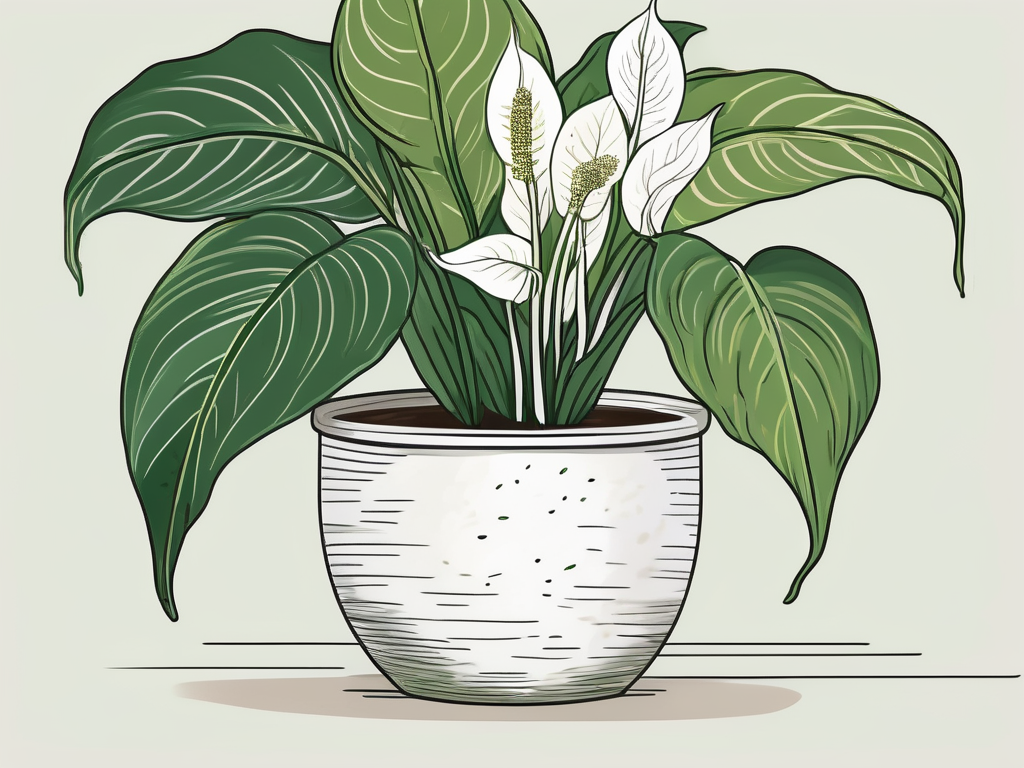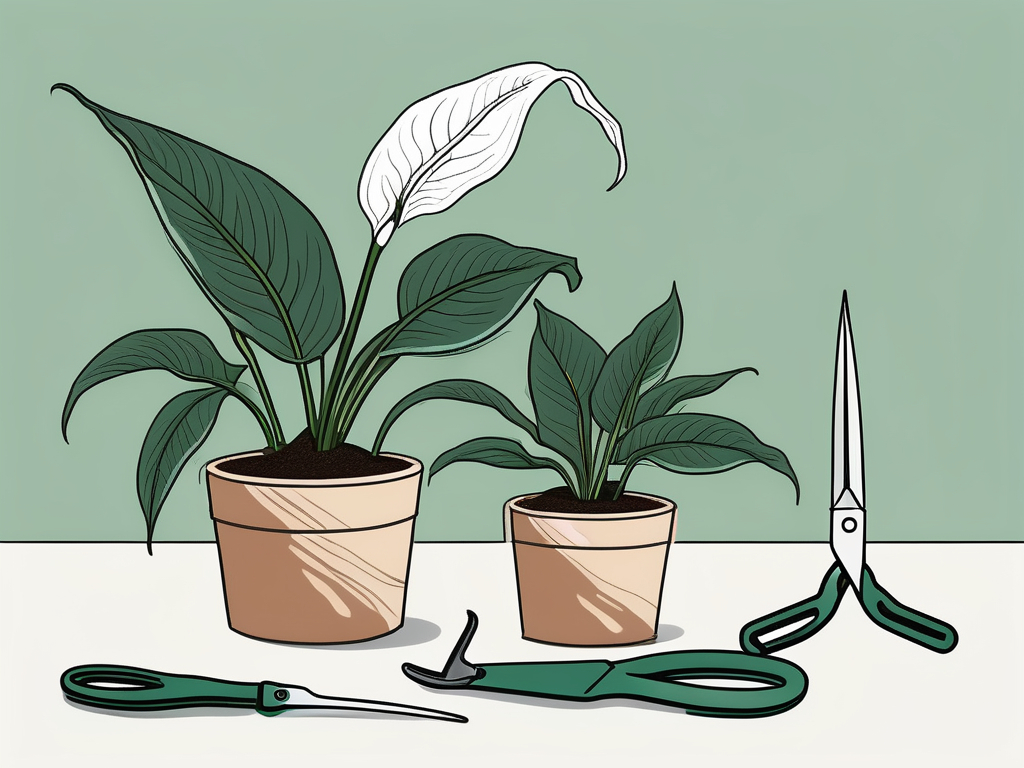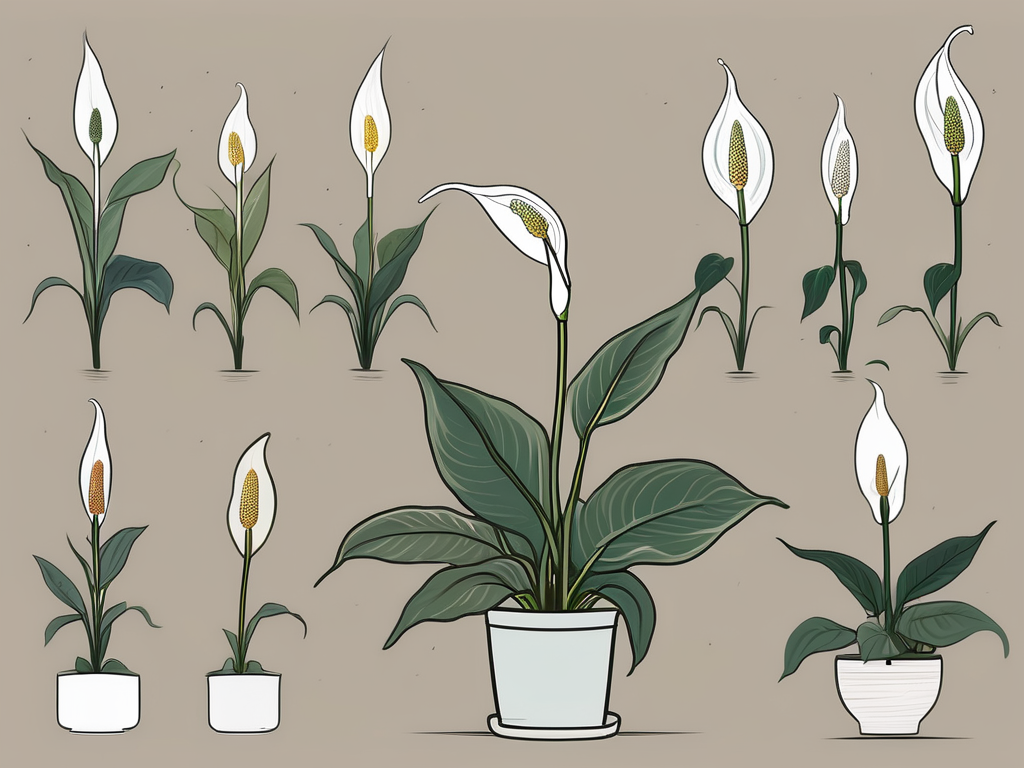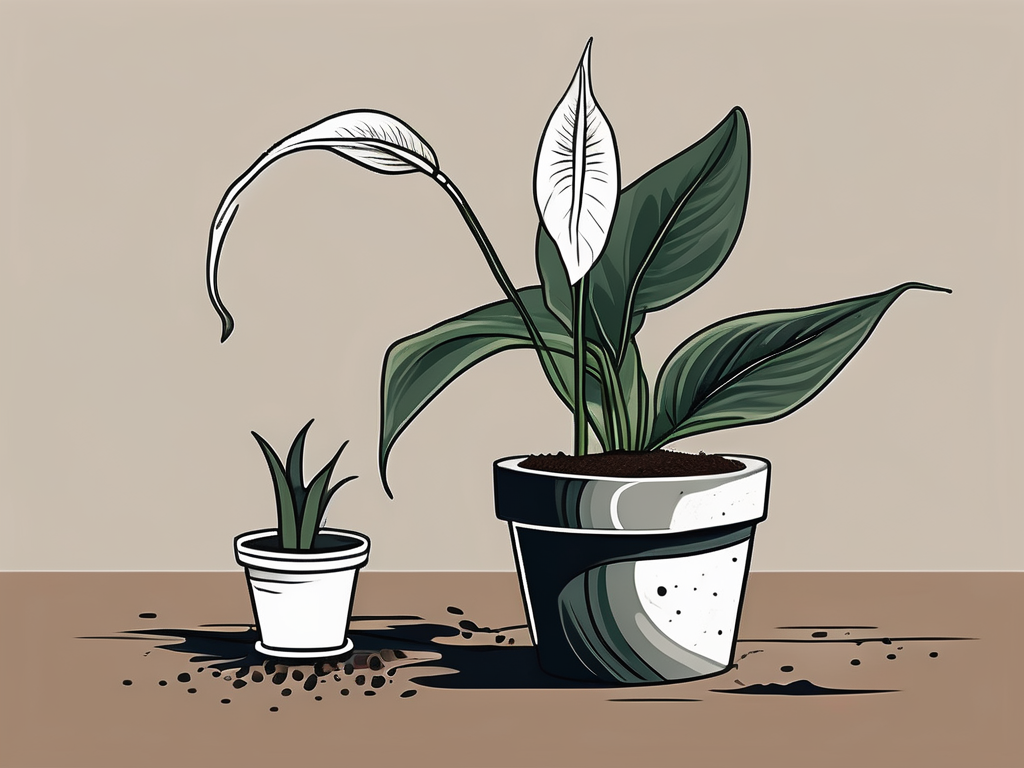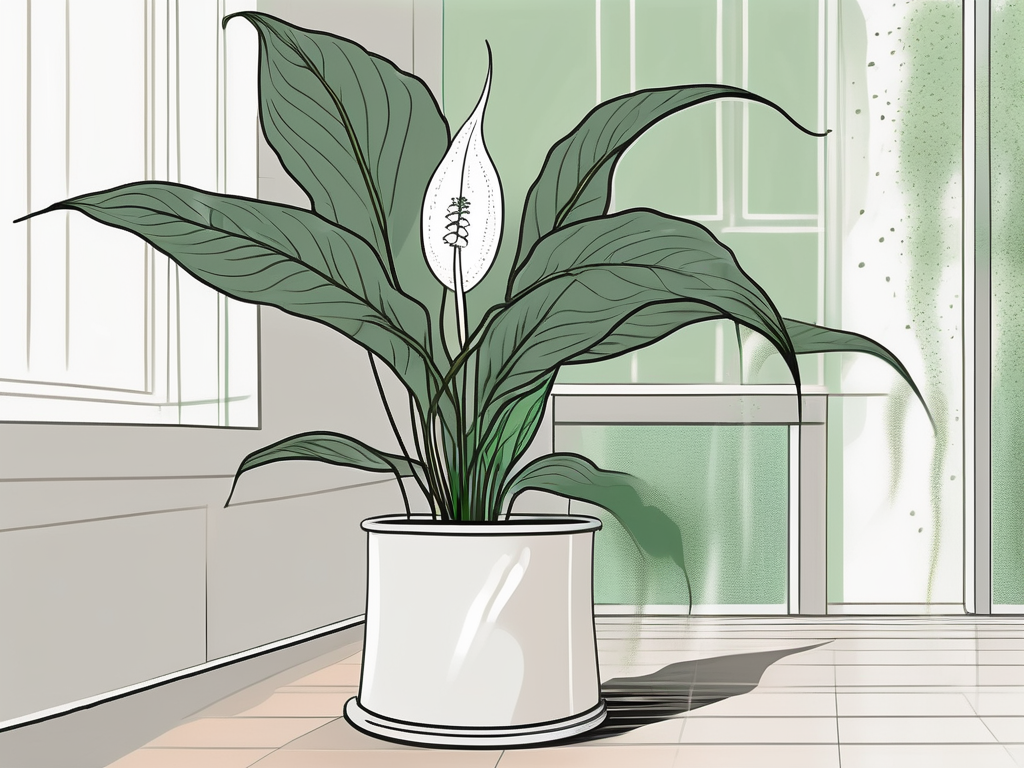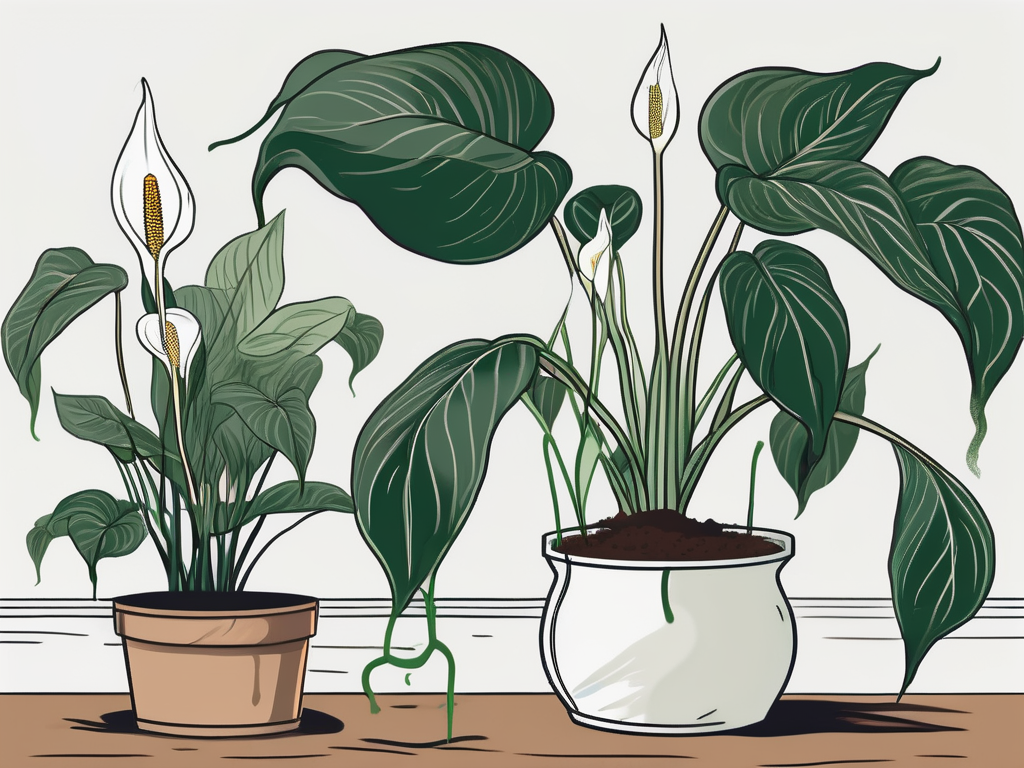
Peace lilies are a popular choice for houseplant lovers. Their elegant white blooms and lush green leaves add a touch of tranquility to any room. But did you know these beauties are also quite easy to propagate? If you're looking to expand your indoor garden or share the love with friends, you're in the right place.
This article will guide you through the process of propagating peace lilies, from gathering your materials to potting your new plants. We'll cover everything you need to know in simple, straightforward steps, so even if you're new to plant care, you'll feel confident getting started.
Understanding Your Peace Lily
Before we get into the nitty-gritty of propagation, it's important to know a little about the peace lily (Spathiphyllum species). This plant is native to tropical regions, thriving in the warm, humid environments of Central and South America. In your home, peace lilies prefer indirect light and appreciate a consistent watering schedule—just enough to keep the soil moist, but not soggy.
Peace lilies are great communicators. If they're thirsty, their leaves will droop, letting you know it's time for a drink. And if they're getting too much sun, the leaves might start to turn yellow. Understanding these signals will help you maintain a healthy plant, which is crucial before you start the propagation process.
Interestingly enough, peace lilies don't actually belong to the lily family. They're part of the Araceae family, which includes other popular houseplants like pothos and philodendrons. This detail can be handy when you're trying to understand their care needs, as they share some similar traits with these cousins.
Gathering Your Materials
Preparation is key when it comes to propagation. You'll want to gather all your materials before you start to ensure a smooth process. Here's what you'll need:
- A healthy, mature peace lily: Choose a plant that's free from disease and pests. It's best if your peace lily has several stems or clumps.
- Clean, sharp scissors or pruning shears: Sharp tools make cleaner cuts, reducing the risk of damaging the plant.
- Small pots: You'll need one pot for each new plant. Make sure they have drainage holes to prevent water logging.
- Potting soil: A well-draining potting mix is ideal. You can use a standard houseplant mix or one specifically designed for tropical plants.
- Watering can or spray bottle: To keep the soil moist after planting.
- Gloves (optional): If you have sensitive skin, gloves can protect your hands from any potential irritation.
Once you have everything ready, you'll be set to move on to the next step. Taking the time to gather your materials beforehand can make the process feel less rushed and more enjoyable.
Choosing the Right Time for Propagation
Timing is another crucial factor in successful propagation. Ideally, you should propagate your peace lily during the spring or early summer when the plant is in its active growing phase. This is when the plant has the most energy to support new growth, making it more likely for your new plants to thrive.
That said, you can technically propagate peace lilies at any time of the year. However, if you do it during the plant's dormant period (usually fall and winter), you might notice slower growth. If you're eager to get started and can't wait for spring, just be prepared for a potentially slower process.
Pay attention to the health of your plant, too. If it's recently been repotted or is showing signs of stress (like yellowing leaves), give it some time to recover before attempting propagation. A healthy parent plant is more likely to produce healthy offspring.
Preparing Your Parent Plant
Now, let's get ready to actually propagate your peace lily. First, you'll want to carefully remove the plant from its pot. Gently tip the pot to the side and support the base of the plant as you slide it out. If the plant is stuck, you can gently squeeze the sides of the pot to loosen it.
Once the plant is out, take a moment to examine the root system. Healthy roots should be white or light tan and firm to the touch. If you notice any dark, mushy roots, trim them away with your scissors or pruning shears. This will help prevent any potential rot from spreading to your new plants.
With the roots in good shape, you can start to separate the plant into smaller sections. Look for natural divisions or clumps within the plant. These are usually easy to spot and will help guide you as you gently pull the plant apart. Each new section should have its own set of roots and at least a few leaves to ensure it can survive on its own.
Dividing the Plant
Dividing the plant is the heart of peace lily propagation. It's where you'll see your single plant turn into multiple new ones. Take your time with this step to avoid damaging the roots and leaves.
Start by gently teasing apart the roots with your fingers. You can use a bit of water to help loosen any stubborn soil clumps. As you work, look for natural separations in the plant. These are usually the best spots to divide, as they'll cause the least stress to the plant.
If you come across any particularly dense sections where the roots are tightly packed, use your scissors or pruning shears to cut through them. Make sure each new division has a healthy root system and a few leaves. If possible, keep at least three to four leaves on each section, as this will give the new plant the best chance of survival.
Remember, patience is key. It might take some gentle coaxing to separate the roots without causing damage. If you rush it, you risk tearing the roots or leaves, which can hinder the plant's ability to recover.
Potting Your New Plants
Once you've successfully divided your peace lily, it's time to pot each new plant. Choose pots that are slightly larger than the root ball of each division, and make sure they have drainage holes. This will help prevent overwatering, which is a common issue with newly propagated plants.
Fill each pot with a layer of potting soil, then place the plant in the pot. Add more soil around the sides to secure the plant in place, making sure the roots are covered but the base of the leaves is above the soil line. Gently press down on the soil to remove any air pockets, and water the plant lightly to help it settle in.
Position your newly potted plants in a location with bright, indirect light. Avoid direct sunlight, as it can be too harsh for the new plants. If your home is particularly dry, you might want to mist the leaves occasionally to maintain humidity, mimicking their natural tropical habitat.
Keep an eye on the soil moisture over the next few weeks. It's important to strike a balance—keeping the soil consistently moist but not waterlogged. Too much water can lead to root rot, while too little can cause the plant to wilt.
Providing Care and Encouragement
After potting, your new peace lilies will need some TLC to ensure they grow healthy and strong. While they might look a bit droopy at first, don’t worry. This is normal as they adjust to their new environment.
Watering is crucial at this stage. You'll want to maintain a consistent moisture level in the soil without overdoing it. Check the soil regularly, and water whenever the top inch feels dry to the touch. If you're unsure, it's better to err on the side of slightly dry rather than overly wet. Remember, peace lilies communicate with drooping leaves if they’re thirsty.
Temperature and humidity are also important. Peace lilies thrive in temperatures between 65-85°F (18-30°C). If your home is on the cooler side, consider placing the plants in a warmer spot. As for humidity, you can increase it by grouping plants together, using a humidifier, or placing a tray of water near the plants. This will help mimic their natural environment and encourage healthy growth.
Finally, be patient. While peace lilies are generally fast growers, the propagation process can take a bit of time. With the right care and attention, you'll have thriving new plants ready to brighten any room.
Common Mistakes to Avoid
Like any gardening endeavor, propagation comes with its own set of challenges. Here are some common mistakes to watch out for, ensuring your peace lily propagation experience is as smooth as possible.
- Overwatering: One of the most common pitfalls is giving your new plants too much water. Remember, the goal is to keep the soil moist but not soggy. Overwatering can lead to root rot, a serious problem for young plants.
- Inadequate light: While peace lilies don't need direct sunlight, they do require bright, indirect light to thrive. Placing your new plants in too dark of a spot can stunt their growth and lead to yellowing leaves.
- Ignoring pest issues: Keep an eye out for common houseplant pests like spider mites and aphids. Catching an infestation early can save your plants from serious damage. Use a gentle insecticidal soap if you notice any unwanted guests.
- Nutrient deficiency: If your new plants seem to be struggling, they might need a little extra nutrition. Consider using a balanced houseplant fertilizer every few months to give them a boost.
- Being too hasty: Finally, don't rush the process. Allow your plants the time they need to adjust and grow. With patience and care, they'll reward you with beautiful blooms and lush foliage.
By avoiding these common mistakes, you'll be well on your way to a successful peace lily propagation experience.
Repotting Your New Peace Lilies
In time, your new peace lilies will outgrow their initial pots and need repotting. This is a great sign that your propagation efforts were successful, and your plants are thriving.
Typically, you'll want to repot your peace lilies every 1-2 years. Signs that it's time to repot include roots growing out of the drainage holes, the plant looking top-heavy, or water taking too long to drain through the soil.
When it's time to repot, choose a pot that's one size larger than the current one. Carefully remove the plant from its pot, being mindful of the roots. You can gently loosen any that are tightly bound or spiraling around the inside of the pot.
Fill the new pot with fresh potting soil, place the plant in, and add more soil around the sides to secure it. Water the plant thoroughly after repotting to help it settle in and remove any air pockets.
Repotting gives your peace lilies a chance to stretch their roots and continue growing healthily. It's a simple process that can make a big difference in the overall well-being of your plants.
Sharing Your New Plants
One of the joys of propagating peace lilies is the ability to share them with friends and family. Gifting a plant you've grown yourself is a unique and thoughtful gesture that can brighten someone's day.
When sharing your plants, consider providing a little care guide along with them. Include tips on light, watering, and general maintenance to help the recipient keep their new plant healthy. It's a great way to pass on your knowledge and love for plants.
If you're feeling creative, you can also personalize the pot or add a decorative touch with stones or small figurines. This adds an extra layer of thoughtfulness to your gift, making it even more special.
Sharing plants is a wonderful way to connect with others and spread the joy of greenery. Your propagated peace lilies can become a cherished part of someone else's home, bringing beauty and tranquility wherever they go.
Final Thoughts
Propagating peace lilies is a rewarding process that allows you to expand your plant collection or share the love of plants with others. By following these steps and giving your plants the care they need, you'll enjoy beautiful, thriving peace lilies in no time.
At Cafe Planta, we're here to help you with all your plant care needs. Whether you're looking for new houseplants, plant care accessories, or simply want to chat about plants, feel free to reach out to us. You can email us or send us a message on Instagram. Let's grow our love for plants together!














